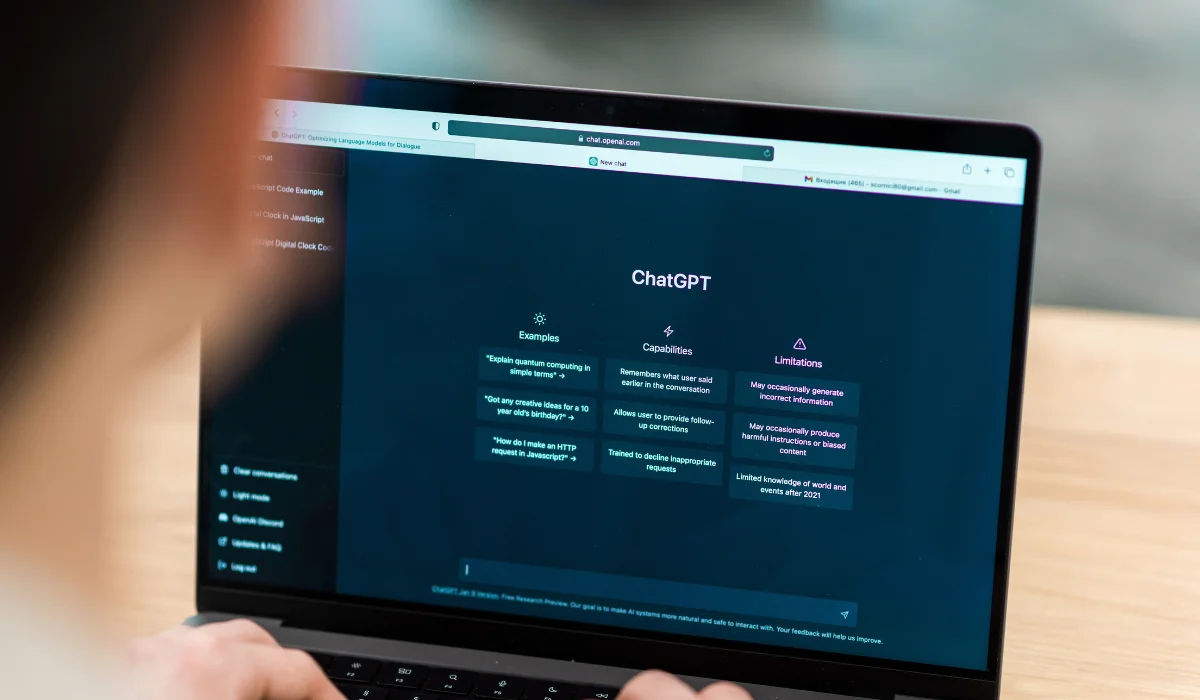As businesses seek to harness the power of AI, developing custom LLM solutions is very vital. The market is booming, with projections showing growth to $14 billion by 2028, at an annual rate of 34.7%. This surge reflects the increasing adoption of LLMs across various business functions. However, only 14% of companies have fully deployed LLMs, highlighting the need for strategic development and implementation.
In this blog, we will discuss in detail custom large language model development, their benefits, and the best practices to reduce the cost.
What is a Large-Language Model (LLM)?
Large Language Models are AI programs designed to understand and generate human-like text. These models use deep learning techniques to process vast amounts of data, enabling them to grasp the nuances of language and perform complex tasks.
The term “LLM” is more straightforward. LLM is a computer program that has received sufficient examples to interpret and understand human languages and other complicated data. Most LLMs are based on information gleaned through the internet, including thousands or gigabytes of text. However, the quality of these data sets affects how LLMs can learn. So, an LLM developer should prefer a more carefully refined data set.
LLMs employ a form of machine learning known as deep learning, which helps comprehend how words, characters, or sentences interact. Deep learning entails the probabilistic examination of non-structured data, eventually allowing the deep-learning model to distinguish between different parts of the content without human intervention. They are further trained through fine-tuning or faster-tuned according to how the programmers would like them to perform.
Benefits of Custom LLM Model Development
Today, in a data-driven environment, Businesses are always looking for ways to enhance their decision-making procedures, effectiveness, and productivity. Custom LLM solutions have become an efficient tool tailored to business demands.
We’ll examine the advantages of customized LLM models and how they could revolutionize decision-making and streamline business processes.
- Enhanced Accuracy: Custom large language models rely on specific data of any industry which includes terminologies used by them and other important data. This specification trains the model to produce results with higher precision and accuracy, reducing errors and improving overall reliability.
- Streamlined Data Analysis: The main benefit of customized LLM models is their capacity to simplify data analysis. Integrating various data sources can give you an extensive view of business processes. They can detect patterns, spot trends, and draw insights from massive data. Business leaders can make data-driven decisions quickly and confidently using custom LLM models. They can offer actionable suggestions, allowing management to develop growth and efficiency strategies.
- Increased Efficiency and Productivity: Productivity and efficiency are essential for any company striving to meet its objectives. The custom LLM models can significantly boost these aspects and provide tangible benefits to your company.
- Predictive Analytics: Custom LLM models also use predictive analytics to predict the future direction of events and results. By analyzing historical data, the models can identify patterns that might not be obvious to humans. These insights can aid businesses in identifying opportunities and reducing risks.
With predictive analytics, customized LLM models aid in forecasting sales, understanding customer behavior patterns, optimizing resource use, and more. Companies can be an inch ahead of their market by using these models as decision-making tools. - Automated Workflow: By creating customized LLM models, businesses can automate various procedures and workflows. They can simplify routine tasks and reduce the time and effort needed to finish. Eliminating manual intervention and errors can minimize the chance of error. By automating the workflow process, companies can improve the allocation of resources and focus on more valuable tasks. This can improve efficiency since employees can use their time and skills on more strategic projects.
- Improved Resource Allocation: Custom LLM models can assist companies in optimizing their resource allocation. The models can predict resource demand by studying historical data and real-time information, identifying inefficient areas, and recommending resource allocation adjustments.
Companies can cut expenses, increase efficiency, and improve overall efficiency through efficient resource allocation. The custom LLM models allow companies to improve their supply chain and technology infrastructures, improving bottom-line performance.
Key Features of Custom LLM Solutions

LLM development’s main focus is individualization, domain integration, contextual adaptation, and optimization. In this section, we’ll explore the key features that drive the growth of LLMs and discover the ways they interact to create custom LLMs that are so effective.
1. Personalization
Personalization is a critical element in LLM application development because it helps ensure that the model is aligned with the company’s goals and improves overall performance. By adjusting the LLM to the specific needs of their business, businesses can achieve better results, which include enhanced customer experience, more efficient processes, and improved profitability.
This can be accomplished by instructing an LLM on a wealth of specific company data, such as products, policies, customer interactions, and the specific terminology used in the industry. Furthermore, the model has to be honed by the company’s internal tools and apps. This enables the LLM to evolve and function following the company’s requirements and ensures that it provides more pertinent and actionable data that aligns with the company’s goals.
2. Domain-Specific Integration
The data used in LLM application development have specific fields that pertain to the specific domain of a business. When companies use specific domain-specific LLMs, These modelers are taught to comprehend and incorporate information from the data. Every company has its own set of guidelines, rules, and specifications, and these specific domain LLMs are taught to adhere to these guidelines strictly.
Compared to foundational models, which are trained with huge quantities of unannotated data (data that are not labeled or have a specific significance) specifically designed for domains, domain-specific LLMs are refined using annotated data sets (data that have been labeled and classified according to particular business needs).
This distinction is significant because foundational models can learn general patterns from unstructured data, while specific domain LLMs focus on specialized skills and tasks crucial to the business. This results in an understanding model that can accurately predict future events and offer insight into a specific business or industry.
3. Contextual Adaptation
A large language model can perform effectively when provided with a few examples or instances related to a specific task or situation. This is termed the capability of contextual learning in LLMs. Analogies are one of the fundamental building elements of context-based learning. There are various methods to achieve this within the realm of AI, such as Chain of Thought (COT), which aims to improve the ability of LLMs to perform the domain of reasoning, self-consistent COT, and Tree of Thoughts.
Developing Custom LLMs: A Step-by-Step Guide
1. Data Collection and Preprocessing for Custom Models
A customized LLM’s basis is the data it’s developed upon. Gathering a comprehensive and complete data set relevant to your mission is vital. The data should encompass the full range of language terms, terminologies, and contexts the model must comprehend and create. After the collection process, preprocessing the information is necessary so that it can be used to train.
The steps from preprocessing consist of cleansing (removing any data that is not relevant or incorrect), tokenization (breaking the text into manageable chunks like words and subwords), and normalization (standardizing text formatting). These methods help reduce noise and improve models’ capacity to gain knowledge from information.
2. Choosing the Right Foundation Model and Customization Technique
The next thing to do is choose a suitable foundation model. Models for foundations like Llama 2, BLOOM, or GPT versions provide a good start due to their extensive initial training in different areas. When choosing a model, please take into account the architecture of the model, its dimension (number of variables), and its learning data’s range and diversity.
When you have selected a basis model, the most appropriate customization procedure must be identified. Methods like fine-tuning and retrieval augmented generation or prompt engineering could be utilized based on the job’s nature and the desired model’s performance.
3. Selecting the Right Model Size for your Use Case
The model’s size, typically expressed by the number of parameters, directly impacts its capacity and resource requirements. Larger models can capture more complex patterns and produce more precise outputs, but this comes at the expense of more computational resources used to train and infer. So, choosing the right size model should be based on the desired accuracy and existing computational capabilities.
The smaller models are suitable for less demanding tasks when unavailable computation resources. In contrast, bigger models may better serve the more complicated tasks. Which is the ideal dimension? It is best to start with a solid model and then check the benchmarks. Then, before reducing it to one with fewer parameters, compare your output against benchmarks. This is all an issue that boils from a particular use situation you could be facing.
4. LLM Application Development and Deployment
After you have customized your large language model (LLM) to your business requirements, the next step is seamlessly integrating it into your existing systems. This requires creating the infrastructure and APIs to allow the LLM to interact with your existing platforms, whether they’re external tools, customer-facing apps, or any other software applications. In this stage, it is essential to run rigorous tests to ensure that the model functions as you expect it to across different situations.
Testing includes the non-functional and functional elements, including accuracy in generating responses, the speed of execution, and the model’s capacity to deal with unexpected inputs or massive use. In addition, security concerns should be considered to ensure that sensitive information processed through the models is secured. After the model has succeeded in its integration and testing, it can be put into production, where it can help with real-world scenarios.
5. Continuous Improvement
LLMs require ongoing maintenance and updates to remain effective and updated. After the model has been deployed live, constant monitoring is required to evaluate its performance. This includes monitoring key parameters like speed, response accuracy, and user feedback to determine areas that require improvement.
Furthermore, frequent updates are necessary when new data is available and the language changes. New data sets can be used to refine and retrain the model, ensuring it can adapt to new trends or modifications in user behavior. Feedback loops give users insight into how the model’s performance can be valuable in making targeted improvements. Continuous refinement not only improves the model’s performance but also ensures that it is in line with the company’s ever-changing objectives and requirements.
Challenges and Considerations in LLM Customization
Designing a custom LLM specifically for a specific task presents a complicated array of issues and concerns that must be considered to ensure viability and efficiency.
1. Balancing Computational Resources and Model Capabilities
One of the main problems when modifying LLMs is finding a proportion of available computational capabilities compared to the model’s requirements. Larger models need much computational power, both for training and inference, which can limit the capabilities of numerous businesses.
The customization process could require more significant resources, specifically through strategies like fine-tuning, retrieval enhancement, and generation. Innovative training techniques and model design are vital to making LLM customizable.
2. Ensuring Up-To-Date Information and Reducing Model Hallucinations
A further challenge is ensuring that the model works in a current way with data, particularly in fast-developing areas. LLMs, by nature, have been trained using massive datasets, which could quickly be obsolete. Methods like retrieval-augmented generation could help by adding real-time information into the model’s response.
Still, they will require a complex implementation to guarantee precision. Furthermore, eliminating the possibility of “hallucinations,” or instances in which the model provides false or incorrect data, is essential to keeping confidence in the model’s outputs.
3. Privacy and Security Considerations
Developers need to consider users’ privacy and data protection during LLM application development. Data handling and security from users must align with privacy and safety of data laws. Implementing measures like anonymizing data, getting user consent for data use, and adopting robust methods for securing data are crucial.
Securing the privacy and security of data users’ stores builds confidence and protects against information breaches or misuse.
4. Domain Expertise in Model Customization
Expertise in the domain is essential to customize large language models, from training data, model selection and preparation to fine-tuning and testing. Experts don’t just provide specific knowledge to help in the customization process, they also play a vital part in evaluating the outputs of the model for quality and accuracy. They can help adjust the model’s parameters and its learning process to align with the particular requirements for the tasks to be done.
5. Implications of Law and Regulation
The process of developing LLMs is not immune to regulatory and legal aspects. The language models could create text that infringes on IP rights or privacy or spreads false data. A large language model development company, therefore, should be aware of legal consequences and ensure that their models comply with defamation, copyright, and other laws and rules. Compliance with laws and regulations protects from hefty fines and penalties. It also encourages the legal and responsible use of LLM technology.
3 Best Practices for Developing LLMs
While LLMs are constantly evolving, an out-of-the-box model is not available for an organization’s specific use case. However, following these best practices can help develop one.
1. Make Sure to Balance Model Size with Resource Costs
Developing a custom LLM for each use case is not economically feasible. Cost, speed, output accuracy, and model size are key factors. The larger the model, the higher the cost, as resources are needed for deployment, fine-tuning, and querying.
You can balance the cost with the model size by developing smaller models for specific or multiple tasks. However, the response time decreases with the size. A good approach is to create a single model, fine-tune it on diverse data sources for different tasks, and check that model’s performance and accuracy.
Various tools, such as EleutherAI, are available to evaluate the LLM’s performance. You can also use a large LLM to evaluate the performance of small models and augment them according to responses.
2. There is Never a Final LLM
The work you put into an LLM does not stop when it is put into production. Model drift — where an LLM is less precise in time as concepts change in the real world — will impact the accuracy of the results.
The ideal update situation is to do it without spending too much and reduce the effort required between different versions. Creating or tweaking the base model completely for every updated version is more economical than building upon older versions.
This approach is ideal for LLMs built on evolving data, as the most present “fresh” version is only used in your training dataset. Other LLMs may have some updates in data, removals, or additional data. Adjustments made by starting from scratch over the base model will eliminate much re-tuning work and allow developers to test the biases and weights against prior data.
3. Don’t Always Start from Scratch
Fine-tuning can be much quicker and less expensive than creating the new LLM. With pre-trained LLMs, most work has been accomplished. The developers community has highly praised open-source models that provide exact results.
They eliminate the need to train your model or redesign your technology stack. In the end, you might require spending a bit of time reading the documentation available online, in which case you’ll be able to play around with the model and refine it.
Many different LLMs are equally created yet unique. However, their output quality greatly depends on the training data. Therefore, it is essential to examine models according to the information they provide and their responses. Remember that these models represent brand-new technology, and open-sourced models could contain important safety issues.
So, carefully evaluate the risks of open-source models and then decide whether to fine-tune or build from scratch.
The Potential of Custom LLMs in Transforming Operational Processes
Custom LLMs allow you to optimize and automate the efficiency of various jobs, ranging from customer service support to creation and analysis. By understanding and creating results resembling human responses, these models can perform complicated tasks that previously, dramatically cutting down on the time and energy needed while improving the output quality. Additionally, they are flexible. Customized LLMs enable constant improvement, leading to continuous innovation and growth.
Customized LLMs have numerous and diverse possible applications, from finance and healthcare to education and entertainment. In healthcare, for instance, custom LLMs help with diagnosis, patient care, and medical research. In finance, they can improve the detection of fraud, risk analysis, and customer service. Their adaptability to LLMs for specific jobs and areas of expertise underscores their transformational capabilities across different sectors.
Final Thoughts
The custom LLM development is experiencing dramatic advancements and exciting prospects. With more advanced models, multimodal capabilities, and constant efforts to tackle the ethical issues and biases surrounding them, LLMs are poised to transform every industry.
However, addressing privacy, transparency, and security issues is vital to guarantee ethical and accountable implementation. By fostering collaboration, improving interpretability, and following legal and regulated frameworks, we can maximize LLM’s ability to transform the interaction between your business and customers while opening up many new possibilities.
At Softude, our team of LLM developers is at the forefront of creating and implementing custom large language models (LLMs). We’re dedicated to harnessing the power of these technologies to revolutionize business operations. With deep expertise in machine learning, natural language processing, and data management, we craft LLMs tailored to your company’s unique needs and new opportunities.



